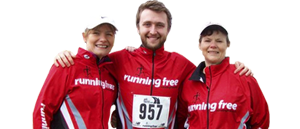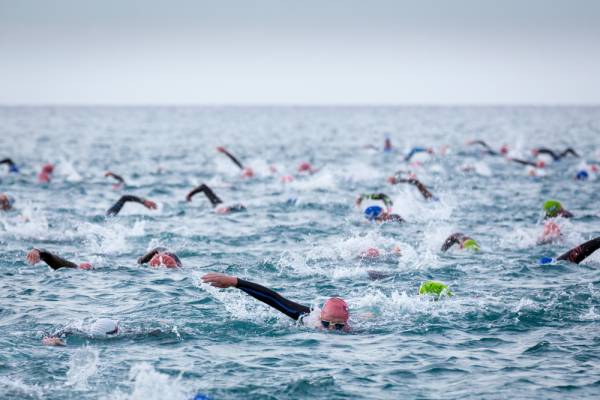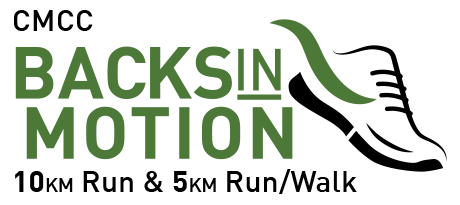As mentioned in an earlier article, there are triathlon races of many different lengths, including Give-it-a-Tri, Sprint, Olympic (Standard), Half, and Full distance triathlons. Choose a suitable distance, and find a race on a suitable date at a convenient location, which will be a personal choice.
If you want to start with only one “third” of the triathlon, you can ease yourself into the sport by doing a triathlon relay with 2 friends – you do one leg and find friends to do the other 2 legs. If you aren’t ready for the swim leg, you can register for a duathlon – run, bike, run. If you can do all three sports, then you have no excuse – sign up today!
Below are some special considerations for your first race. Make sure you also read all of the helpful articles and FAQ on the specific triathlon race website. There are likely rules about clothing requirements (cover your torso, no nudity in transition) and no music/headphones on any portion of the race, including the run.
ARRIVAL (SIGN IN)
On the day of the race, make sure you arrive at least an hour before the race starts. Know your bib number and wave before you arrive (sent in an email 1-2 days before the race). After you park, you need to sign in and get your cap, bib number, timing chip and commemorative t-shirt. You also need to go to body marking where someone writes your number on your arm and your age (as of Dec 31) on your calf.
TRANSITION SET UP
You need to bring your bike into the transition area – hopefully they have security wrist bands for both your wrist and your bike so that nobody walks off with the wrong bike. Make sure you pump up your tires before your race. You need to find the appropriate bike rack (the racks are numbered, and you can go anywhere on your assigned rack). Hang your bike from the front of your saddle or your handle bars, alternating with the neighbouring bikes to use space efficiently. Place your shoes and socks, sunglasses, running belt, and hat in a small compact space (on or with an optional small towel) near/under the front wheel of your bike. Some athletes also leave sunscreen, snacks, extra water, medication, etc easily accessible. You cannot leave your knapsack of dry clothes in this area – move extra belongings to the side of the fence where you can access them after the race.
WARM UP
Every athlete will have their own warm up routine. Try an easy run for 5-10 minutes to get your muscles loose (then return your shoes to the transition area). You will want sandals to wear for the 30 minutes before the race, or go barefoot. I also recommend a quick 5-10 minute swim warm up to get used to the water. Wait until 30 minutes before your wave starts though – you don’t want to get cold waiting to start.
SWIM
You need to know which wave you have been assigned so you start at the right time. Everyone should be wearing the same colour cap so you can follow everyone else. Find a strategic spot (towards the front if you are a strong/fast swimmer, or towards the back if you want to avoid the melee). Make sure you know the direction you are swimming, and go on the proper side of the buoys. Sight often by lifting your head, or by doing breast stroke occasionally. You don’t want to go off course and swim extra distance. The longest part of the triathlon is the bike portion. It can also be the most expensive, if you let yourself get carried away buying the latest equipment. For beginners, start with whatever bike you have (some will do it on a mountain bike, but I don’t recommend that). As you get more involved in the sport, you will want to consider spending $1000+ on a road bike (or $3000+ on a time trial bike). You can wear cycling shorts (with a thick chamois) and a cycling jersey with pockets while training, but most triathletes wear tri shorts (thin chamois) and a tri top for both the cycle and run. Many even wear them under their wetsuit for a fast transition! I recommend clipless pedals and cycling shoes, but you can use regular shoes and pedals as well. The only mandatory equipment is an approved cycling helmet – you should wear it on all training runs for your own safety, but it is required on race day. You will also want to consider purchasing a saddle bag to hold your phone, a spare inner tube, CO2 cartridge and adapter. For longer races, you can even bring along a snack. Don’t forget a water bottle cage for staying hydrated! Make sure you follow proper cycling etiquette, and ride to the right so people can pass you. If you are passing someone, make sure you call out “On the left” before you approach them.
TRANSITION #1
The most surprising part of a triathlon race for many new athletes is the difficulty of the two transitions. The first transition, T1, is between the swim and the bike. You finish your swim, then run into the transition area, removing your cap and goggles as you run. You also reach behind your back to pull down your wetsuit zipper and start pulling your arms out before you get to your bike.
BIKE
You must wear a helmet for the bike leg of the race – you must do up the chin strap before removing your bike from the rack. Walk/run your bike out of the transition area and keep walking/running with your bike until you pass the mount line. You may get a penalty or disqualification if you touch your bike while not wearing your helmet or mounting your bike before the mount line. Make sure you follow proper cycling etiquette, and ride to the right so cars (and other riders) can pass you safely. If you are passing someone, make sure you call out “On the left” before you approach them. You are not allowed to draft so maintain a 5-10 m zone behind other riders, and you must pass another rider relatively quickly to avoid a “blocking” penalty. Do not cross the yellow line into opposing traffic. Be careful at turns, especially any u-turns. Try to encourage other riders, and thank the volunteers.
TRANSITION #2
As you are finishing the bike portion, look for the dismount line. You must slow down and dismount before that line. You enter the transition area again, and return your bike to the same spot on your assigned bike rack before you remove your helmet. Change your shoes (if necessary), and put on your running belt (or your running shirt with the bib pinned on). You might also put on your hat and/or sunglasses, as appropriate.
RUN
Watch out for wobbly legs as you exit the transition area and start your run. There will likely be aid stations along the route, and you will need to hydrate appropriately according to your personal hydration plan and the weather. Watch your pace – don’t go out too fast. You might be pretty tired after the swim and bike. Try to encourage other runners, and thank the volunteers. Smile as you cross the finish line – there is usually a professional photographer taking pictures at the finish (sometimes at the end of the swim and on the bike as well).
FINISH
At the end of the race, wear your finisher medal (and hat at some races) with pride while you re-hydrate and enjoy your post-race nutrition. Congratulations on successfully completing the race! Now start thinking about the next race!
























